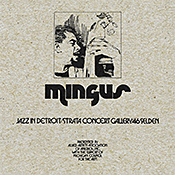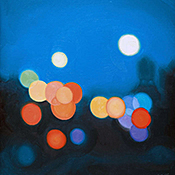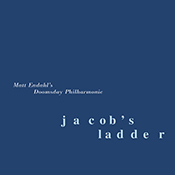Recent Recordings by Area Jazz Artists
Two relatively new record labels have been preserving the rich legacy of Detroit jazz — one focusing on the past and one on current artists. This month I focus on two of their releases; fuller overviews will follow. Also reviewed is a sophisticated large ensemble recording by Matt Endahl that features most of the top younger players on the Detroit and vicinity scene.
Due to the diligence and persistence of Amir Abdullah, BBE has begun to reissue records from the long out-of-print Strata catalog, beginning with classic albums by Bert Myrick, Lyman Woodard and the Contemporary Jazz Quintet (CJQ). The label was part of the Strata Corporation, founded by Kenn Cox, Charles Moore, Ron English and Bud Spangler in the late 60s in Detroit, rooted in self-determination and artistic self-reliance. Spangler, Cox and Moore were associated with local public radio station WDET and as a result were able to broadcast concerts taking place at the Strata Gallery, which was located at 46 Selden St., between Woodward and Cass. At a time when work was hard to find for jazz musicians, the Gallery produced concerts by its members, including Lyman Woodard and CJQ, but also by major touring artists such as Keith Jarrett and Ornette Coleman. In February of 1973, seven months into its existence, the venue hosted a five-day run by the Charles Mingus quintet that was broadcast on WDET; the music was recorded, and tapes of the performances rested with Roy Brooks’ widow Hermine and brought to release by Abdullah as Jazz in Detroit.

During the second half of 1972, the Mingus quintet was in constant shift. The band that reached Detroit in 1973 is one that was never officially recorded. Drummer Dannie Richmond had left temporarily to play with a rock band in the summer, replaced by Detroiter Roy Brooks (who had left the city to go on the road with Horace Silver and was also featured here on his trademark musical saw); trumpeter Joe Gardner had joined in late fall and pianist Don Pullen shortly after. Tenor saxophonist John Stubblefield was in the midst of a five-month stint with Mingus but, hardly alone in this, got into a fight with the bassist and that was that. Two decades later, he would become the stalwart of the Mingus Big Band from its beginnings until his death.
This five-LP/CD is a major historical landmark that includes station announcements and an interview conducted by Spangler with Roy Brooks, but it is not just a document—it is filled with fabulous music. There are ten different compositions, two played twice, and since these were concert performances not programmed for recording, the tracks are long, with extensive solos by all members of the quintet. Gardner, who remains the least well-known among these musicians, was an expressive player, well-suited to the Mingus mold. He had obviously listened to both Kenny Dorham and Clifford Brown but had his own way with the trumpet and was definitely among the top tier of trumpeters who played with the great bassist. His understated melodic sensibilities are well heard on the relaxed “The Man Who Never Sleeps.” The musical partnership of Mingus and drummer Dannie Richmond was one of the most enduring and successful in jazz and it is therefore interesting to hear Brooks, who was a very different percussionist, in this context. Each had his own approach to time, and Brooks had a heavier beat and a singular way of playing cymbals so that he meshes with the bass and with soloists in his own way. He plays hard on these sessions, prodding the front line in his own fashion, but does not overwhelm; his drums are also somewhat back in the mix. The way he could build excitement is particularly evident on the opening “Pithecanthropus Erectus.” The two members who excel, to these ears, are pianist Pullen and saxophonist Stubblefield. Pullen is the only member of this lineup who would stay on with the bassist, working in the band through 1975. Already here the pianist shows all the characteristics that would surface in his subsequent performances and recordings, with Mingus, in his quartet with George Adams and on his own. Pullen could play anything and knew the whole jazz tradition; these recordings are filled with his lyrical runs, percussive chords and the occasional outside playing that made his style, and his long solos are filled with long lines and rich melodic ideas. Some of the greatest moments, as I hear it, come from John Stubblefield, whose seems to feed off this amazing rhythm section and who seems to revel in the shifting rhythms and textures of the leader’s compositions. His later work reveals a tenor saxophonist who had complete mastery over every aspect of his instrument and a rich distinctive sound, and all of this is already here on these tracks. His inventiveness is evident on the two takes of “Celia” on which he solos in singular ways, building tension and excitement in different ways.
Two Room Records was created by Joel Peterson and Sam Hooker to feature musicians who are either from Detroit or who have been connected with the local scene, open to various genres, without borders. True to current trends, this is primarily a vinyl label, although digital downloads are also available. Three records have been released to date (with others in the pipeline): Leonard King and Alex Harding’s Quartet Now!; 7000 Year Plan by the electronic duo Viands; and the genre-bending microtonal piano music of another duo, Thollem and Clem Fortuna, on Your Letter Must Have Followed Me All Over the World.

The first release on Two Rooms, Quartet Now! (TR-001), came out last July; the multi-generational group was cofounded by baritone saxophonist Alex Harding and drummer Leonard King, joined by trombonist Vincent Chandler and bassist Rocco Popielarski. The combo tips its collective hat to the Strata legacy by including compositions written by Kenn Cox and Charles Moore. The opening notes of Luqman Lateef’s “Farid,” from a 1968 recording date by Ed Blackwell that only recently saw the light of day, provide clues to the quartet’s intentions. King, who many remember as coming to prominence with Lyman Woodard’s fusion Organization, sets down a perfect funky beat and Harding comes in with some out sounds; the beat settles in and then comes the bluesy theme, followed by solos by all members of the quartet, with shifting textures and rhythms. After a relatively calm restatement of the main theme comes a chant about freedom and then a free jazz freak-out blast. King is a dominating force on the whole album, which works well in the absence of a piano and Popielarski, the youngest member of the band, finds just the right patterns, his deep resounding acoustic bass setting up rhythmic and harmonic grooves for the horn men to ride on. The music grooves and in many ways harkens back to the soul jazz of decades ago, but the foursome uses this as an anchor for exploring a wide variety of approaches, distilled into individual styles. Chandler likes to combine agile, harmonically complex lines that can go far to the outside but nevertheless anchored in the changes of a tune, with a broad timbral palate that sometimes includes the imaginative use of mutes. Harding is a hard-driving baritone player who, like Chandler, does not stick to one tone on his instrument, but exploits all the possibilities of the big horn, from soft subtones, or boppish lines to screaming vocalisms, with an enviable control of multiple registers. During his many years in New York he played with many of the more adventurous players in jazz, including Julius Hemphill and Sun Ra, and he is no stranger to the explorations of unorthodox sounds. Harding is also at heart a full-fledged blues and ballad player: his identifiable, highly personal style combines these various musical impulses; as a result, his solos are full of surprises with unexpected colors and contours. He is not alone in this — all four musicians are rooted in the blues and the quartet manages to be contemporary and traditional at the same time, communicating directly with the heart without artistic compromise. The music goes in many directions but is always riding on the groove; even the one ballad “You Don’t Know What Love Is,” which begins with expressive a cappella baritone, eventually settles into a slow groove. This is exciting, sophisticated funk!

Pianist and composer Matt Endahl has released Jacob’s Ladder, performed by his Doomsday Philharmonic. The large ensemble consists of cellist Abigail Alwin, Mike Khoury on violin and viola, Patrick Booth, Collin Johnson, Molly Jones and Eric Schweitzer, Kirsten Carey on saxophones, clarinet and flute, vocalist Alex Koi, guitarist Kirsten Carey, Derek Worthington on trumpet, Jon Taylor on drums and percussion, bassist Ben Willis and the leader on piano and electric Rhodes piano. The composition consists of various combinations of musicians, trios, quartets, etc., who created improvised sections, blending into movements, in which performers worked from scores notated in an idiosyncratic system devised by the composer. The concept is complex, partly explained by Endahl as follows: “instead of specifying sounds, rhythms, dynamics, and silence, the notation consists of numbers, which are arranged into measures; and transitions, the period over which one measure is moving to another. Musicians can choose when to play, what to play, and when not to play. As such Jacob’s Ladder is (almost) entirely improvised. The only constraint on the performers is given by the numbers and the regions between them.” The numbers were derived from the building blocks of DNA. The result is that every performance of the piece is completely different, and the recording is but one document of such an event.
The resulting music is rich in textures and melodic contours; the composer manipulated endless combinations of instruments and musicians to create novel segments but was able to combine them into movements with an impressive compositional unity. It is helpful that his musicians all know each other and have been playing together in different contexts and combinations for years, but the unity of Jacob’s Ladder is created by Endahl’s larger musical vision and his unique notation system. Endahl took advantage of this familiarity, carefully matching musicians and instruments in anticipation of specific artistic outcomes, with each section encompassing its own developing shape, some quietly sublime, others brimming with passion. The result is a massive work that blurs boundaries between what could be described as modern or postmodern jazz and new classical music; perhaps most impressive is the fact that listening to the recording one would think that the music had been through-composed with occasional improvised sections and while it is supremely modernist, it also seems accessible to listeners versed in jazz or classical music who are interested in new works. This is an ambitious and original large-scale project that deserves a broad audience.